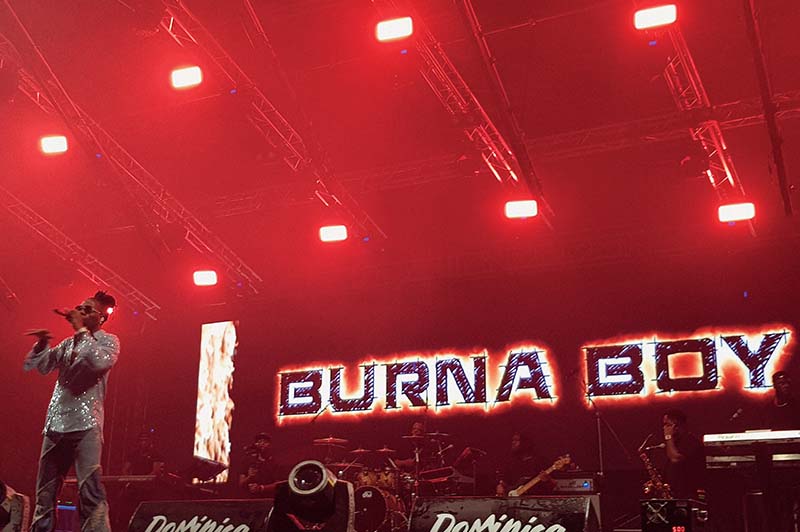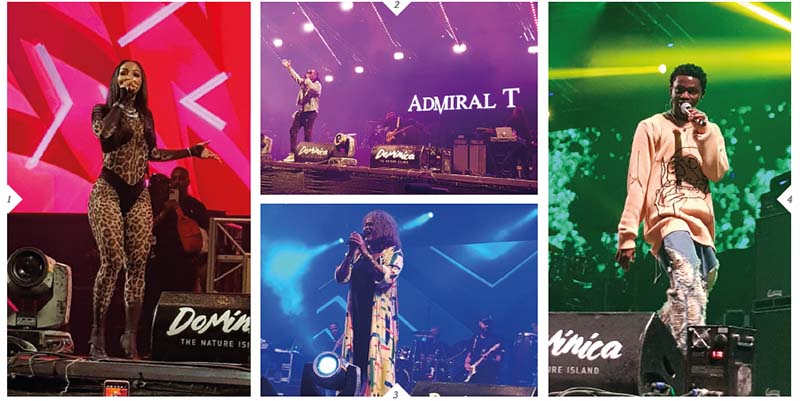
Every year, at the end of October, when gloominess begins to take hold of the Northern Hemisphere, the Caribbean becomes the scene for a unique musical phenomenon of symbolic significance. A breath-taking moment – baptized World Creole Music Festival – that takes place in Dominica since 1997. During a long 3-day weekend, the naturally so peaceful and discreet island of 365 rivers and 9 volcanoes turns into the epicenter of the Caribbean Afro-culture. An event that takes place in the midst of World Creole Day festivities.
Like those of Olympus in their time, the Gods of Jing ping, bouyon, zouk, dancehall, kompa… as well as Afrobeat converge to this preserved piece of land in the heart of the Caribbean …dragging some 20,000 excited festival-goers along with them. Over the years, an increasing number of visitors from all over the world – and from the Caribbean in particular – comes to Dominica every October for the World Creole Music Festival (WCMF). An event that is also embraced by the entire country…
Friday October 28. It is almost noon when we reach Roseau – the capital city. The atmosphere is already saturated with this joyful effervescence that precedes those unique moments of popular jubilation that only exist in the Caribbean. The small town is taken by storm by visitors from all over the region but also from Europe or North America. A flow of music cascades through the bustling streets. Bars and restaurants resonate with bursts of laughter. But what strikes us the most is the omnipresence of Madras fabric. Everybody – men and women of all age – wear the typical shimmering textile. Alerted by the amazed look on our faces a passerby launches “Jôdi sé Jounen Kwéyòl!” in the language that is honored that day. “Today is Creole Day!” he repeats with the joviality that characterizes the inhabitants of the Island.

As a matter of facts, the last Friday of October that is recognized as the World Creole Day by UNESCO since 1983, is also a special occasion for all Dominicans to celebrate their cultural heritage which is rooted in the colonial past of the island. Alternately in the hands of the French and the British during the course of its history, the Nature Island is also a symbol of resistance. Like the one of the indigenous Kalinago people, last-standing guardians of the pre-Columbian legacy in the Caribbean. Or the one of Afro-descendants who have fought numerous fights since the slavery period until the independence of the country on November 3, 1978. Over the centuries, other waves of migration have fed into this melting pot called Creole. It is often times reduced to the eponymous language spoken in several Caribbean islands and beyond, but it is also a joyful ‘art de vivre’, a spicy gastronomy, colorful customs, captivating music… speaking of which… catching back on music! This Friday also marks the opening of the largest festival in the world dedicated to this culture.

Originally intended as a platform to give local artists the opportunity to showcase their talent, the WCMF has transformed over the years into an international event attracting each year no less than 8,000 spectators a day to Windsor Stadium in the heart of the city. In 2022, after two uneventful years because of the pandemic, the festival had to make a strong come-back for its 20th anniversary, while keeping alive the spirit of its origins. Imagine, some of the most popular artists of the moment lining up for 3 days, from 7:00 p.m. to 6:00 a.m! On the local front, the incredible arrival of Assa Banton on a zip line or the explosion of colors caused by Triple Kay did not go unnoticed. Shenseea, Kes The Band, Jocelyn Beroard, Admiral T, Patrice Roberts, Sizzla, Christopher Martin, Omah Lay… – to name a few –completed this tsunami of world class stars to the utmost delight of festival-goers. And to confirm WCMF’s international status who better than the Nigerian hitmaker, king of Afrobeat: Burna Boy himself! A real success.
Auteur : Edgard Parfait

